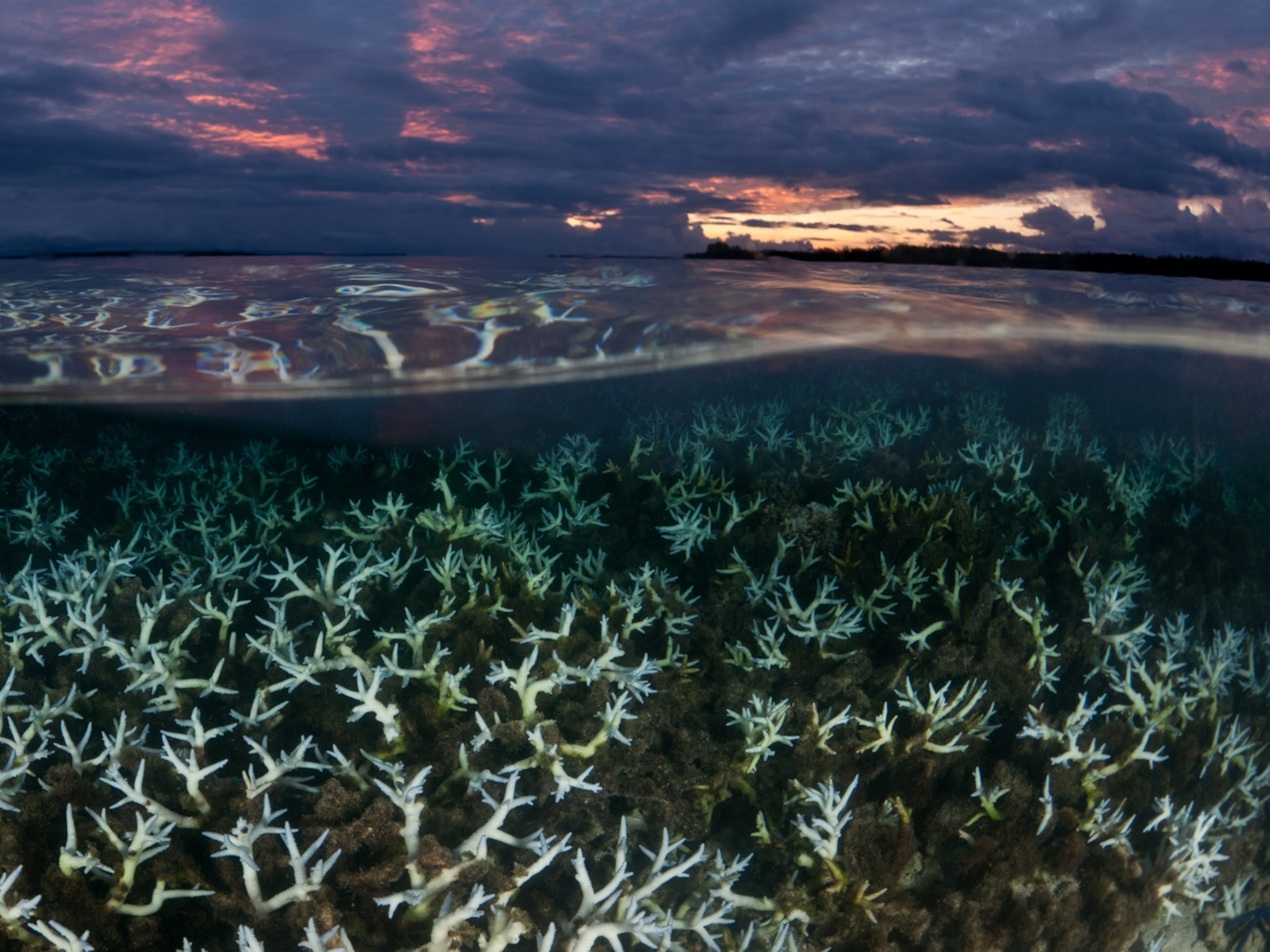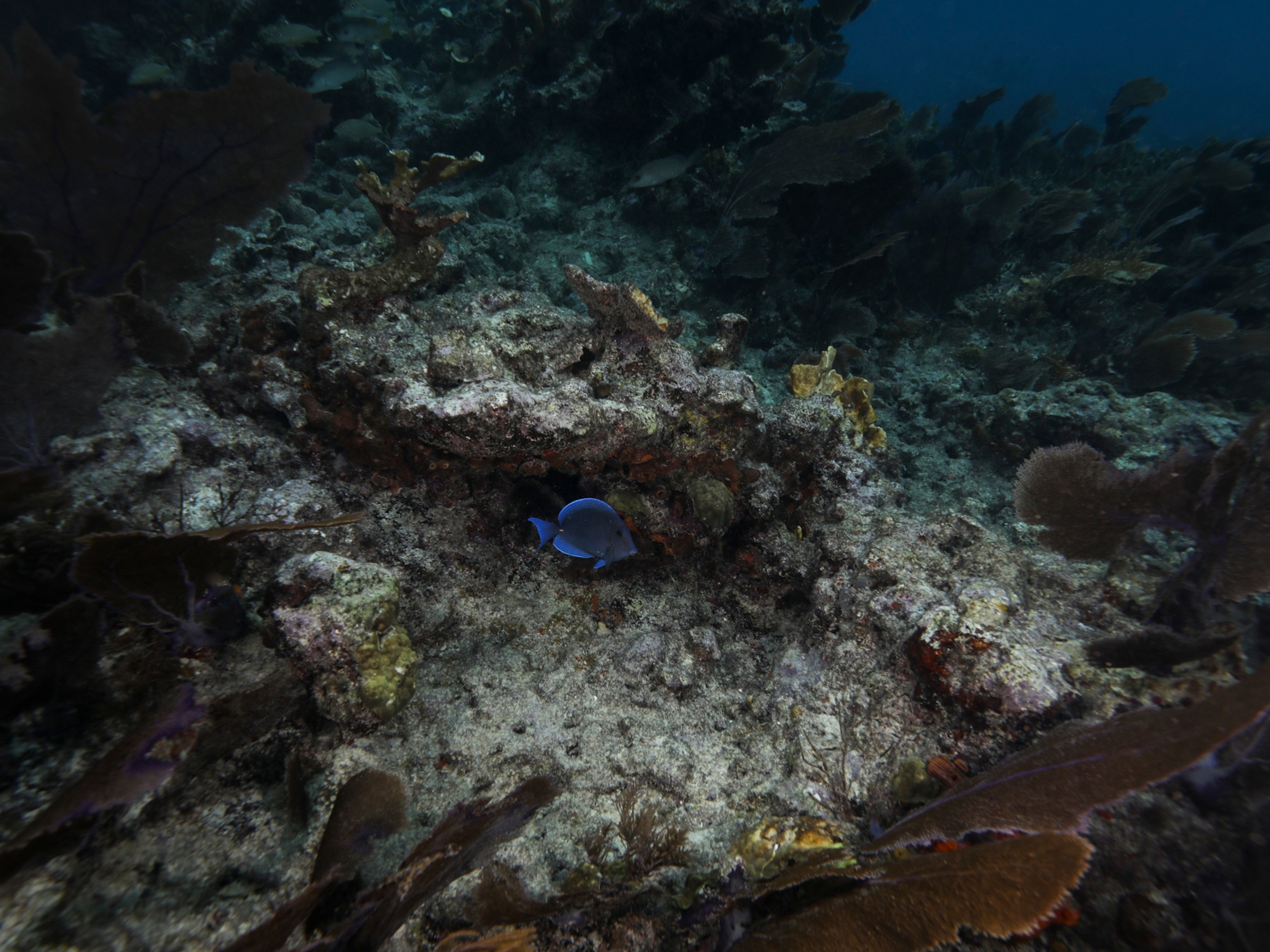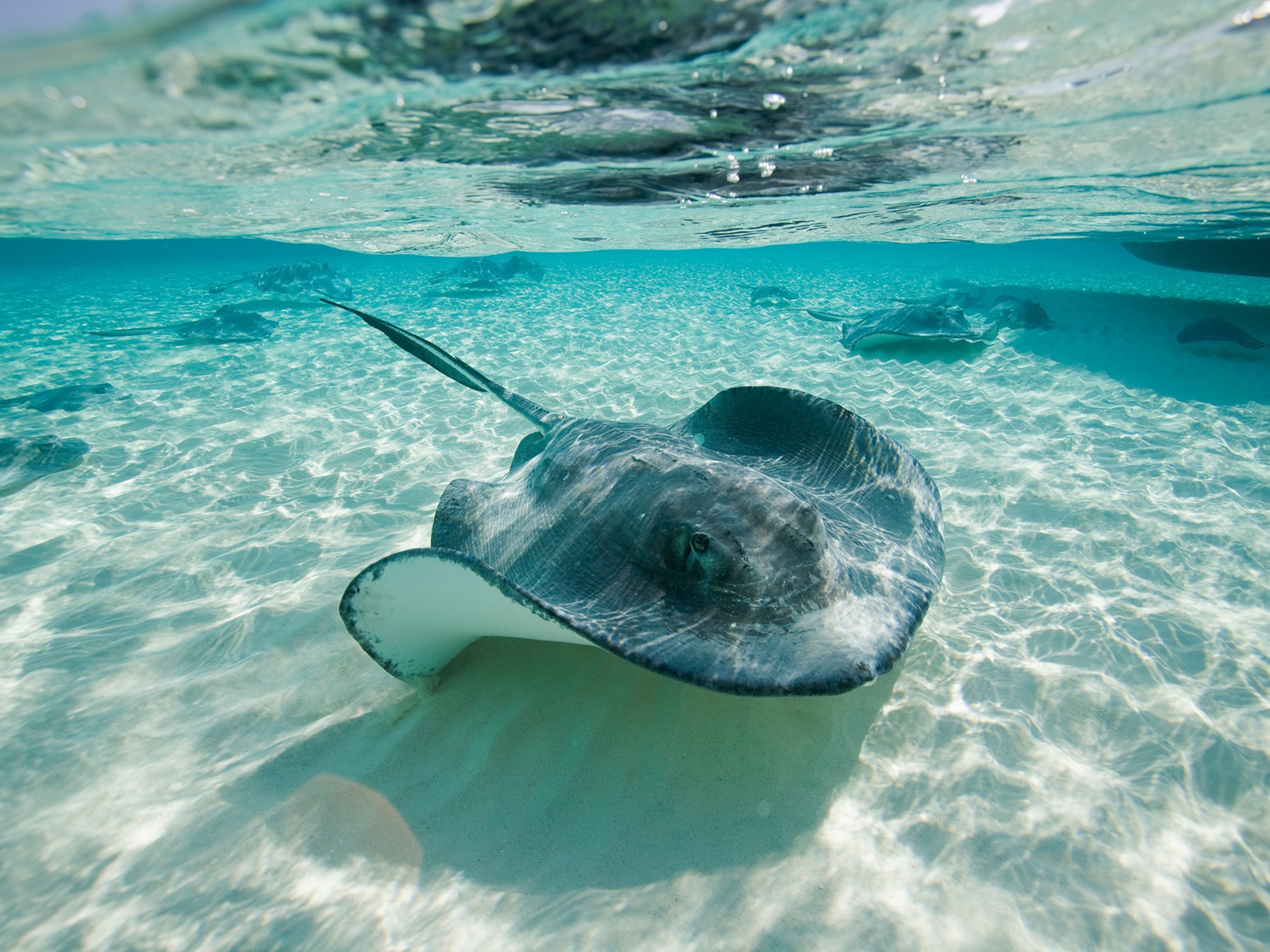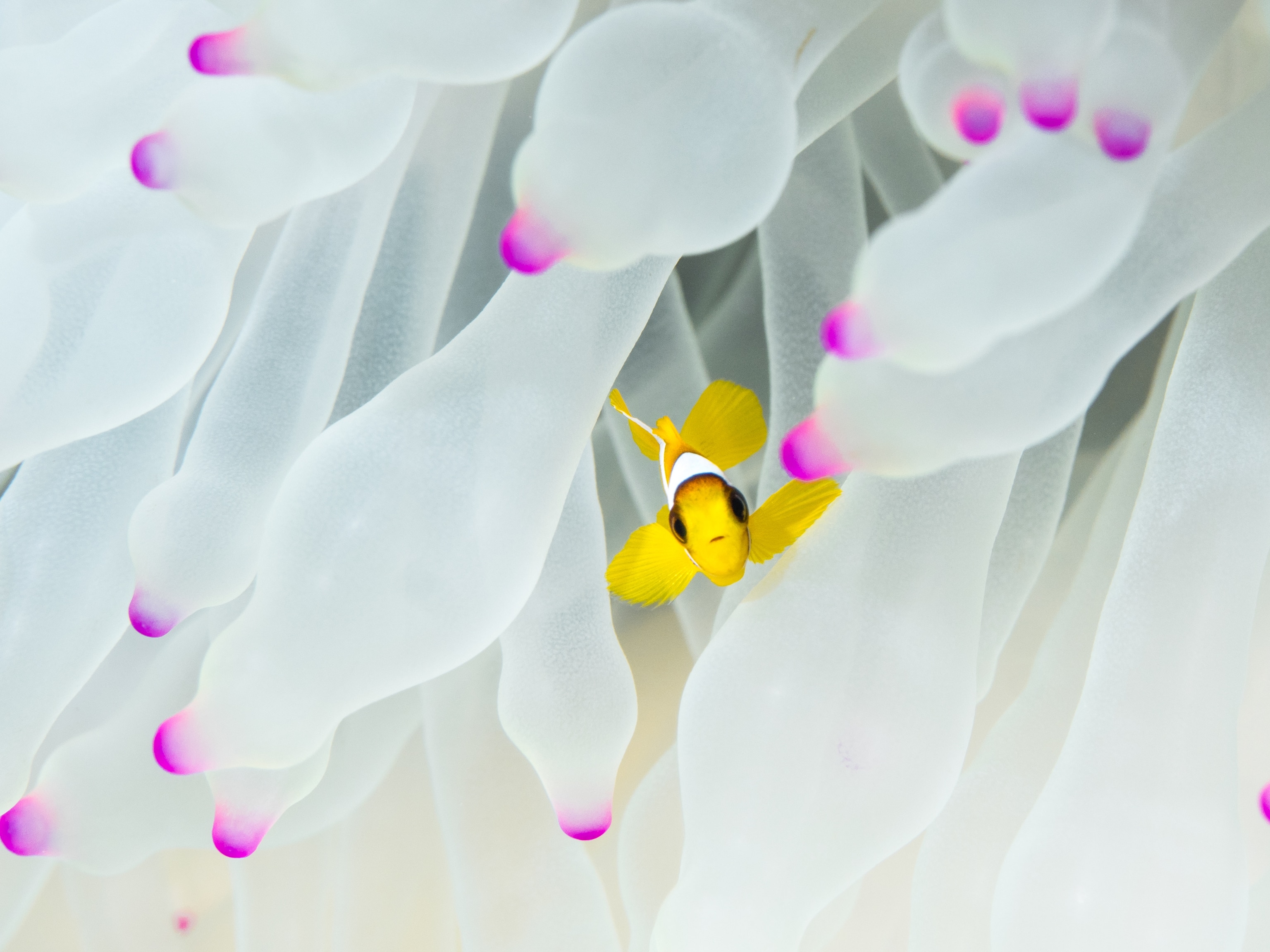Warming Oceans May Make ‘Nemo’ Harder to Find
Heat bleaches sea anemones, too, causing the iconic clownfish to stop laying eggs. Here’s how.
Like coral reefs, sea anemones—with their flashy, tentacle-like polyps that waggle and wave in vibrant reds, greens, pinks, and yellows—provide homes and hiding spots for dozens of fish species, most memorably the orange clownfish made famous in Finding Nemo. Also like coral, rising water temperatures associated with climate change can severely weaken these anemones, causing them to expel the tiny symbionts that keep them alive and lend them color, a process known as bleaching.
That, it turns out, is just where trouble starts.
When anemones bleach, Nemo and pals get stressed out and simply stop laying eggs, according to new research published Tuesday in the journal Nature Communications. And scientists suspect that pattern may hold for untold numbers of other fish nurtured by either corals or anemones.
In other words, the mere stress associated with bleaching may be enough by itself to drive down many fish populations.
And, of course, bleaching no longer happens by itself.

Scientists also working with baby clownfish already have shown that shifts in ocean chemistry as the seas absorb excess carbon-dioxide—a process known as ocean acidification—can be unusually deadly. It scrambles juvenile fishes' brains, hampering their ability to see, hear, and smell. All that causes confusion, often leading them to swim toward—rather than away from—predators. The end result: they die far more often.
While few if any longterm studies have yet looked at just how bleaching and acidification may work in concert, scientists say they certainly aren't likely to somehow cancel each other out.
"Both bleaching and acidification are really stressful events separately," says Danielle Dixson, with the University of Delaware's College of Earth, Ocean and Environment, who spent years researching clownfish and acidification, but wasn't part of the new bleaching study. "I can't imagine that when they both happen it's going to somehow be any less stressful." (Learn how breeding aquarium fish can help reefs.)
The Critical Role of Hormones
The most recent research began when an ocean heat wave washed across French Polynesia in 2015 and 2016. A team of scientists tracked 30 different species of anemones in a lagoon off the island of Moorea. That warmth didn't just cripple corals. For more than four months, it attacked and bleached roughly half of those sea anemones. So scientists sampled the fish living among these overheated anemones and compared them with fish living in healthy ones nearby.
The release of hormones is known to affect how everything from sea birds to marine iguanas weather the rapid upheaval associated with climate change. That's true for fish, too.
The team found that the creatures associated with bleached anemones were chronically stressed, showing high levels of cortisol in their blood, says study co-author Suzanne Mills, with the Center for Insular Research and Observatory of the Environment in French Polynesia. Reproductive hormones dropped in both males and females. Fish pairs from bleached anemones spawned less and ultimately produced far fewer viable young.
That could have longterm implications that could ripple through entire marine systems.
"The cascading effects of bleaching at the community and ecosystem levels will, and may have already, played an important role in population impacts," Mills says.
The Bigger Picture
Mills and her co-authors figured out that of 464 coastal fish species in French Polynesia, 56—about 12 percent—depend on species susceptible to bleaching for food or shelter from predators.
"If these species suffer even a fraction of the impact found for anemone fish, then a short-lived bleaching event could decrease the reproductive output of at least 12 percent of species," the study authors wrote. Ecosystem-wide impacts "may be considerable."
Dixson says Mills' findings are "really, really solid." And while they may not be terribly surprising to marine scientists, it should be an eye-opener for the public.
And, of course, that's only one part of the equation.
"Unfortunately, we're never going to have a world where the oceans are acidifying but not warming," Dixson says. "And all of the data suggests that won't be good."


















